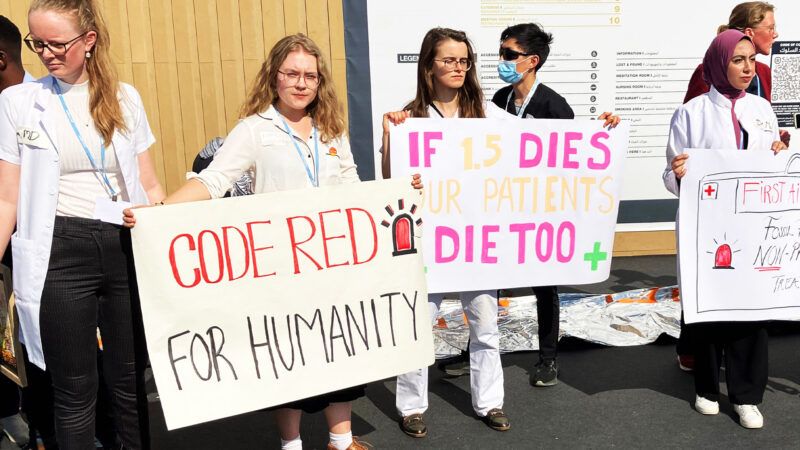Despite Climate Change Activists' Demands, 1.5°C Is Already Dead
The good news is that does not mean "instant Armageddon" by 2030.

SHARM EL-SHEIKH, Egypt — "We'll either leave Egypt having kept 1.5C alive, or this will be the Cop where we lose 1.5C," warned Alok Sharma earlier this week at COP27. Sharma is the former U.K. cabinet minister who chaired last year's United Nations COP26 climate change conference in Glasgow. The communiqué issued at the Bali G-20 summit earlier this week confirmed the commitment of the world's largest economies to "pursue efforts to limit the temperature increase to 1.5°C." Actually, 1.5 degrees C is already dead.
First, some background. The 1.5 degrees C figure that Sharma wants to keep alive comes from the 2015 Paris Agreement in which signatories agreed to hold "the increase in the global average temperature to well below 2°C above pre-industrial levels" and pursue "efforts to limit the temperature increase to 1.5°C above pre-industrial levels." The World Meteorological Organization reports that the global average temperature for 2021 was 1.1 degrees C above the 1850–1900 baseline. Using the same baseline, the independent climate analysis group Berkeley Earth reported that the 2021 global average temperature was 1.2 degrees C higher and that the average over the Earth's land areas was already 1.7 degrees C higher. Clearly, the world is even now bumping up against the 1.5 degrees C threshold.
So what would it take to keep the world from exceeding this temperature threshold? Only cutting global greenhouse gas emissions by around 45 percent between now and 2030, says the U.N.'s Intergovernmental Panel on Climate Change. Instead of falling, global greenhouse gas emissions are projected to increase over 10 percent between now and the end of this decade, according to a U.N. assessment of the greenhouse gas reduction commitments made by Paris Agreement signatories. "We've barely scratched the surface. And the one year since Glasgow, frankly, has been a year of climate procrastination. By 2030, we need to reduce emissions by between 30 to 45 per cent, but since COP26 we've shaved off one per cent. So, we have a long way to go," said the U.N. Environmental Programme chief, Inger Andersen, at a COP27 event.
In a recent analysis over at Carbon Brief, University of Leeds climate scientist Piers Forster and his colleagues calculated that "cutting global CO2 emissions to zero by 2050, in line with limiting warming to 1.5C, would require them to fall by about 1.4GtCO2 every year." It is estimated that global carbon dioxide emissions will reach a record of 37.5 gigatons this year. As the researchers point out, an annual 1.4 gigaton cut in carbon dioxide emissions would be comparable to the drop in 2020 resulting from COVID-19 lockdowns around the world. More levelheadedly, they observe, "It is important to note that it is neither harmless to keep emitting CO2 up until the budget is blown, nor instant armageddon if it is exceeded."
Other evidence bolsters the point made by the Leeds group. Consider a recent briefing paper by researchers associated with the Climate Resource consultancy. Assuming that all of the signatories to the Paris Agreement keep their greenhouse gas reduction pledges, their "best-estimate" is that warming by 2100 will be just below 2 degrees C at 1.9 degrees C. This is obviously in line with the Paris Agreement's goal. The Climate Resource calculations are in line with an earlier study this year in Environmental Research Letters by University of Colorado climate policy researcher Roger Pielke Jr. that concluded that worst-case climate scenarios are "highly implausible" and that the world's current trajectory would result in an average global temperature increase of around 2.2 degrees C above the pre-industrial baseline by 2100.
The Leeds researchers are right: When the global average temperature exceeds the 1.5 degrees C threshold in the next decade or so, climate Armageddon will not break out.


Show Comments (169)